Chinese fans have a long history. The ancient written characters for fan contained the pictographs for bamboo and feathers, implying that ancient fans were probably made of these materials. Legend has it that the Yellow Emperor used them in his palace over 6000 years ago.
The earliest recorded fans date from the Han dynasty. Called "procession fans," they were fastened to sedan chairs to shield the riders from dust and sun. Aside from their practical protective function, these large fans served to decorate the vehicle and give it a majestic appearance.
Procession fans were used exclusively by high ranking state officials. During the Southern and Northern dynasties the procession fan was used as a symbol of power during court ceremonies. By the T'ang and Sung dynasties, the use of such fans in rites and ceremonies was strictly regulated. Fan numbers and design were systematically prescribed according to the specific type of ceremony in which they were used. Similar long-handled procession fans may be seen today in Taiwan at festivals in honor of local deities.
Fans used to stir the air also have a considerable history. As described in historical records, the ancients fastened long-handled bamboo fans to treadle boards. The pedaling of the treadle moved the fan and created a refreshing breeze.
Hand fans were also common, and came in a variety of shapes and materials. There were six-cornered, oval, square, as well as kidney-shaped fans. But because most were spherical they were called "round fans".
Their surfaces could be made of reeds, rushes or silk, with bamboo, rhino horn or sandalwood handles.
Round fans became popular during the reign of the Han emperor, Han Cheng-ti, (B.C. 33-8). A tale is told of one of Han Ch'eng-ti's lovely courtesans, Pan Chie-shu, who lost her favored position with the emperor with the arrival of a more beautiful concubine. Alone in the women's chambers of the palace, she composed a poem about a lovely white fan that brings refreshment and joy in the summer, but is discarded with the coming of autumn. She inscribed it on a fan and presented it to the emperor.
In such a way, well-educated young women often expressed their feelings through the gift of an inscribed fan. Because many round fans were decorated and used by maidens, they were sometimes called "maidens" chamber fans".
Another interesting use of the round fan was as a cover for the face. In ancient times a woman's beauty was most enticing when only partially revealed. Half could be easily concealed behind a round silk fan.
Because most round fans were made of white silk, they were ideally suited to calligraphy and painting. Scholars particularly enjoyed painting and writing on fans.
Legend has it that the famous calligrapher Wang Hsi-chih wrote on fans for the benefit of the poor. One day when Wang was out walking, he met a destitute fan-seller who was unable to sell her fans. Taking brush in hand, he wrote characters on each fan, enabling her to sell them for a considerable sum.
Sung dynasty scholars particularly enjoyed painting fans, and adorned their surfaces with landscapes, beautiful women, birds, flowering plants and scenes from contemporary life. Soon the fan format took a special place in Chinese painting.
Some hand fans were plaited. Plaited fans did not originate in China, but were brought as tribute items by Korean and Japanese monks during the Sung dynasty. Exquisitely painted with delicate pastel landscapes, they won immediate popularity.
Aside from offering fans as tribute items, the "eastern barbarians" sold them in the capital along with other goods. As foreign trade began to flourish, folding fans became a common trade item. Manufactured by the Chinese as well, the folding fan took on a new appearance in the hands of Chinese artisans.
The Chinese were best known for their paper fans, as paper-making was also a Chinese specialty. Chinese papers and fans came in a countless variety of colors. Many different bamboos were also used in the frames.
Fans came into universal use because they were light and convenient to carry, and necessary during the hot, humid summer. As fan manufacturing developed, scholars continued to enjoy adding their poetry, painting and calligraphy to the surface, and fans became a popularized art form.
Fan-making as an art was highly developed in the Ming and Ching dynasties. Hangchow was particularly famous for its fans. Within the city was Fan Alley, in which was located Wang Hsiu-tsai's famous fan shop. The shop sold many different types of fans, exquisitely constructed with the finest materials.
The construction of one type, the "black paper fan", involved an 86 step procedure. The finished product had seven layers of fine silk paper and nine layers of paint. It was resistant to both rain and sun.
Fans eventually became collectors' items. A well-known contemporary fan collector is Huang T'ien-ts'ai. After the Cultural Revolution, many fans from the mainland were sold to Japan and other countries. Stationed in Japan as a representative of the Central Daily Newspaper, Huang began to buy up many of these fans.
A collector for ten years, the three things Huang looks at in a fan are calligraphy, painting and workmanship. He sees a good fan as a work of genius, and never misses a chance at an exquisite acquisition.
Huang already owns over 400 fans. As his funds are limited, he acquires new fans by exchanging them for others in his collection.
Among the fans in Huang's collection are four fans painted and inscribed by the four famous Chinese opera stars Mei Lan-fang, Ch'eng Yen-chiu, Hsu Hui-sheng, and Shang Hsiao-yun. He also has a fan which Chang Ta-chien painted for his first love, Li Ch'iu-chun. Another fan painted with lotus flowers was done by the Empress Dowager of the Ching dynasty. Most interesting is a fan which Yuan Shih-k'ai's son inscribed for his father, expressing his deep concern of his father's political ambition.
Nothing can compare to the fan as an ideal objet d'art. Small and exquisite, it combines handicraft with the three great Chinese arts of poetry, painting and calligraphy.
While modern society is equipped with electric fans and air conditioning, crafted hand fans have lost much of their original utilitarian value. But as works of art they remain priceless, and are likely to be enjoyed for generations to come.
(Jill Ardourel)
[Picture Caption]
1.2.3. Chinese fans are often inscribed or painted by scholars. 1. A fan painted by the Ching painter Lang Shih-ning. 2. A fan inscribed by Liu Yung of the Ching dynasty. 3. A figure of a lute player, painted by Ch'en Chou of the Ming dynasty, decorates this fan. 4. An octagonal silk fan with ivory handle is skillfully decorated with embroidery and beads.
1. A portrait of Chung Hsu by painter T'ang Chien-feng. 2. When painting a fan, the artist must be particular about composition and color. 3.4. These two fans by Hsu Pei-hung and Ch'i Pai-shih have had their frames removed for convenience in safekeeping. 5. Chang Ta-ch'ien painted this fan for his friend Li Ch'iu-chun.
1. Fan collector Huang T'ien-ts'ai (right), and fan conservator Chang Hsin-pai became friends through their common interest. 2. Chang Hsin-pai concentrates on repairing a fan. 3. These two fans were painted by the Empress Dowager. On the back sides are inscriptions by the top candidates in the imperial examination. 4. In this painting a servant holds a procession fan. On the table is a round fan. 5. A Ching dynasty fan with a painting of the Buddha has maintained its vivid brilliance. 6. Fans painted by four famous Chinese Opera Stars.
1. An elderly shoe peddler cools herself with a palm leaf fan. 2. The use of fans is still common in rural areas. Pictured is an elderly woman who holds a rush fan while chatting with her daughter-in-law. 3. A grandfather entertains his grandson with a plastic and paper fan. 4. Large kungfu fans create an interlocking pattern of lights and darks under the brilliant rays of the sun.
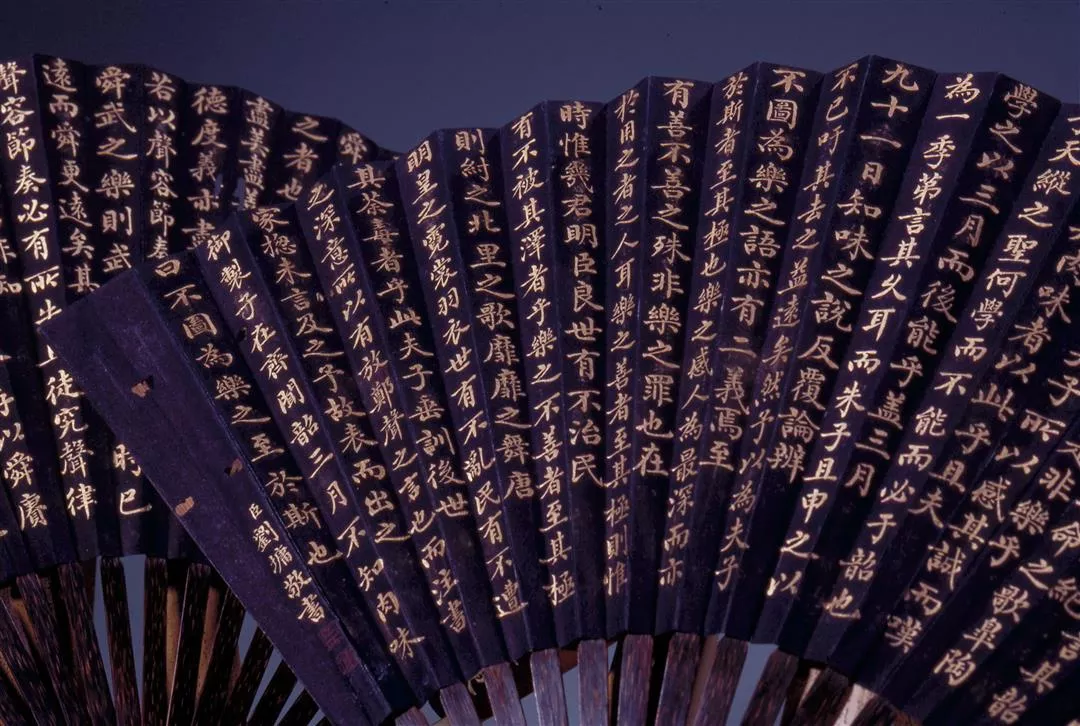
2. A fan inscribed by Liu Yung of the Ching dynasty.
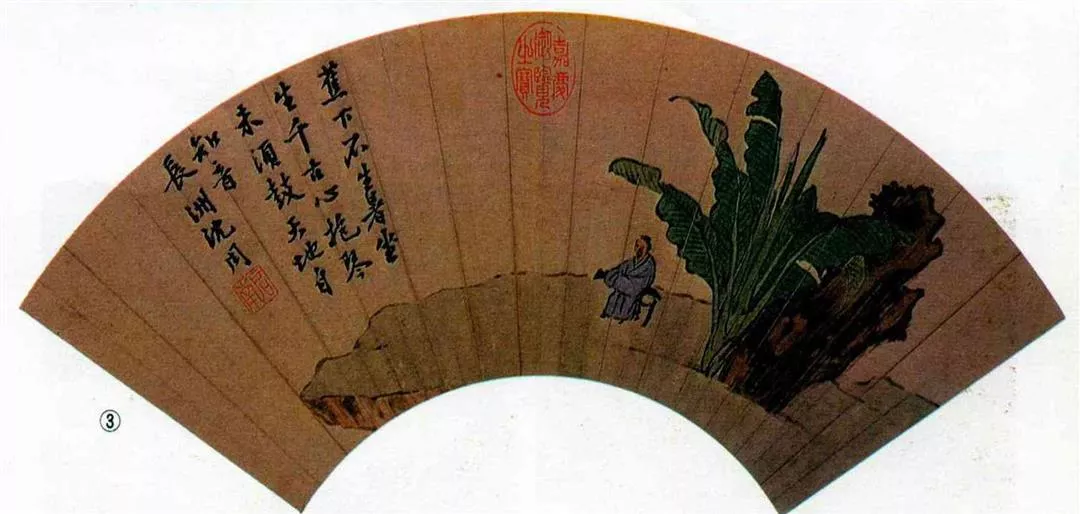
3. A figure of a lute player, painted by Ch'en Chou of the Ming dynasty, decorates this fan.
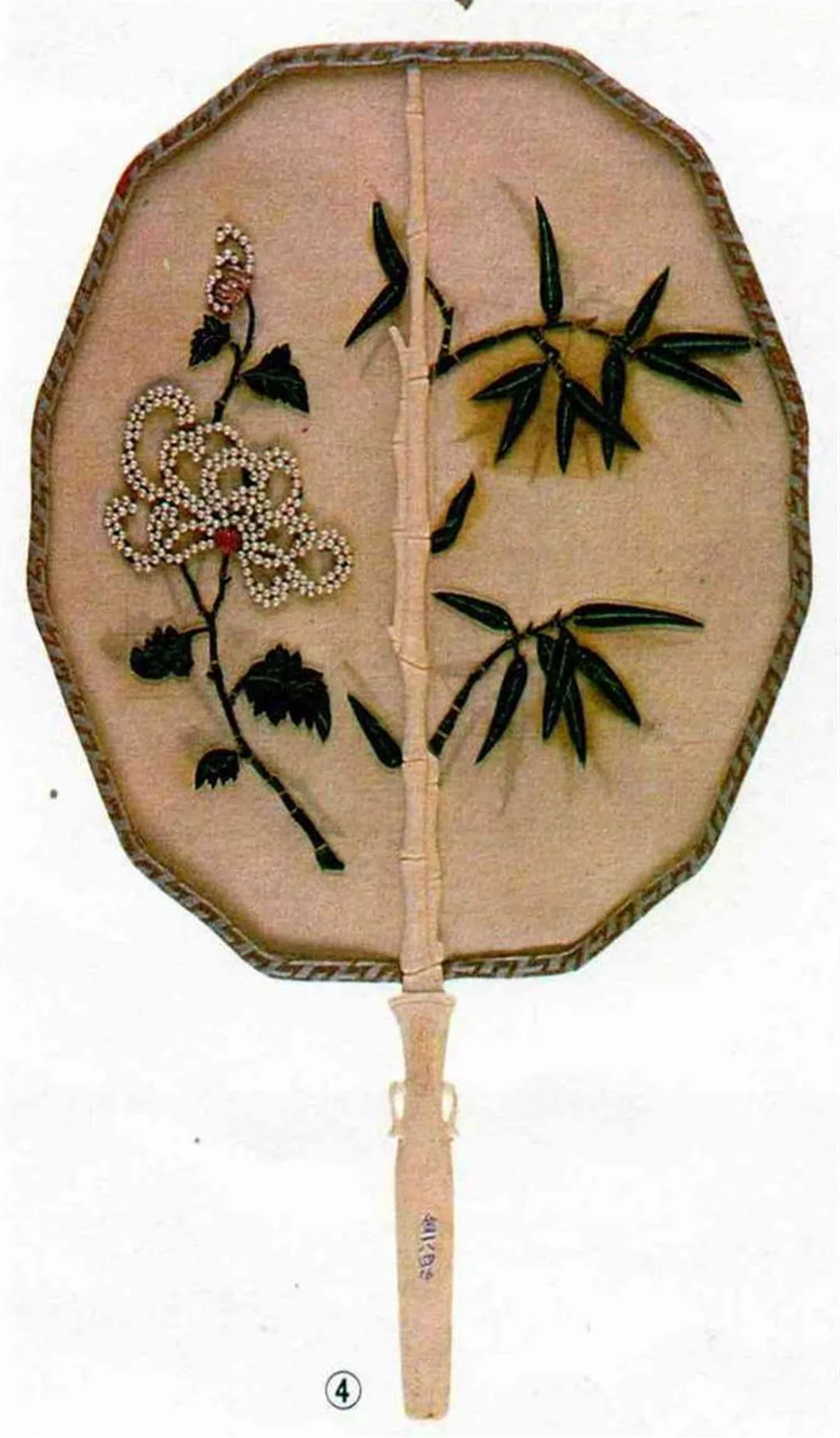
4. An octagonal silk fan with ivory handle is skillfully decorated with embroidery and beads.
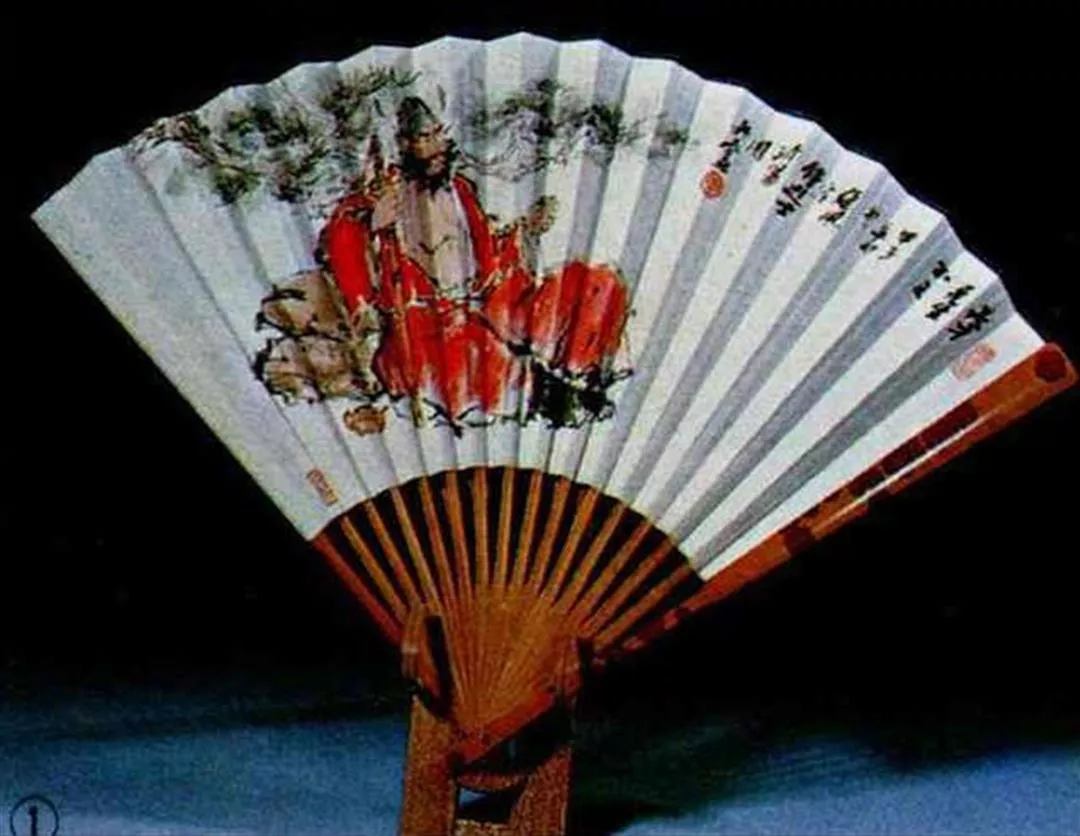
1. A portrait of Chung Hsu by painter T'ang Chien-feng.
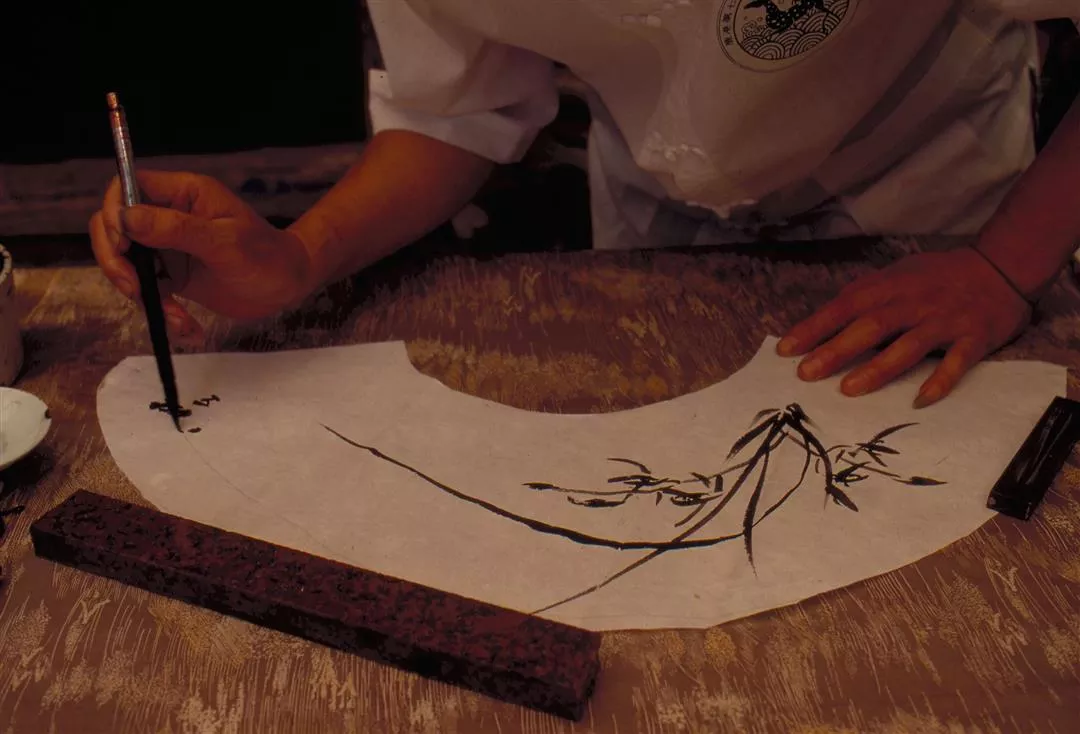
2. When painting a fan, the artist must be particular about composition and color.
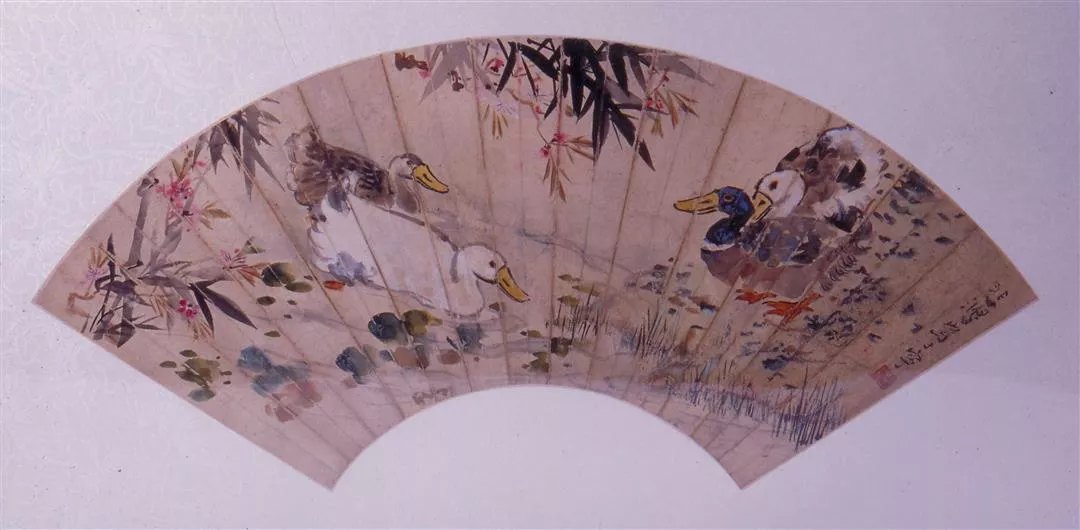
3.4. These two fans by Hsu Pei-hung and Ch'i Pai-shih have had their frames removed for convenience in safekeeping.
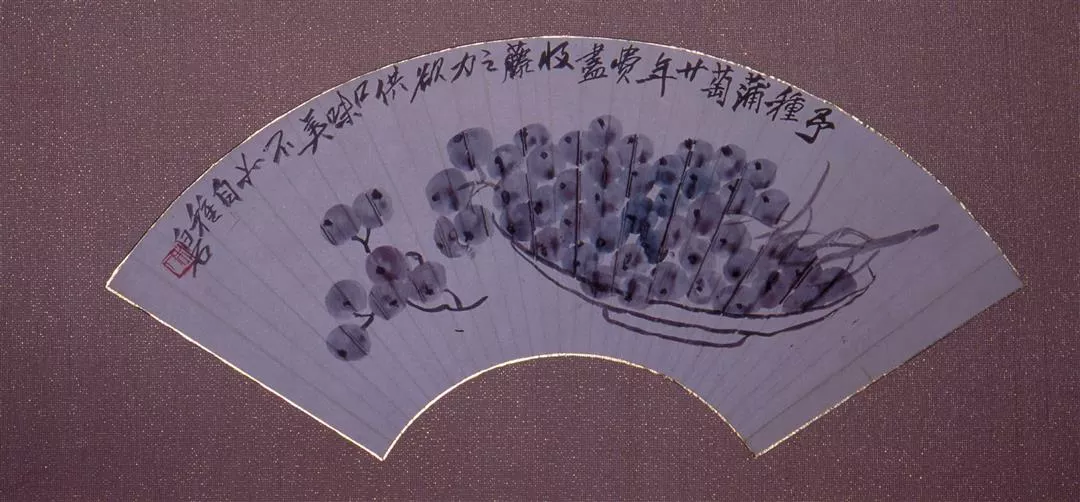
3.4. These two fans by Hsu Pei-hung and Ch'i Pai-shih have had their frames removed for convenience in safekeeping.
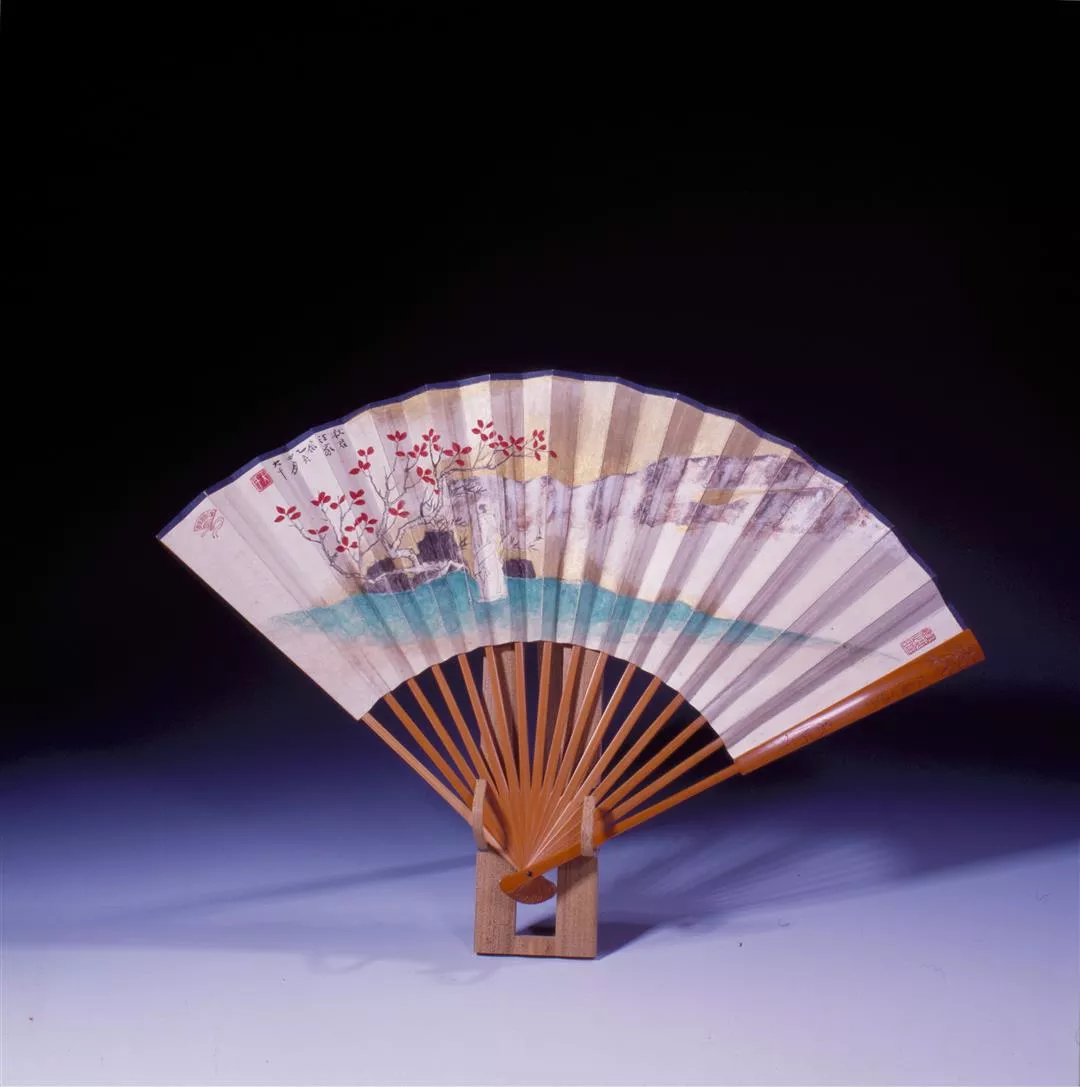
5. Chang Ta-ch'ien painted this fan for his friend Li Ch'iu-chun.
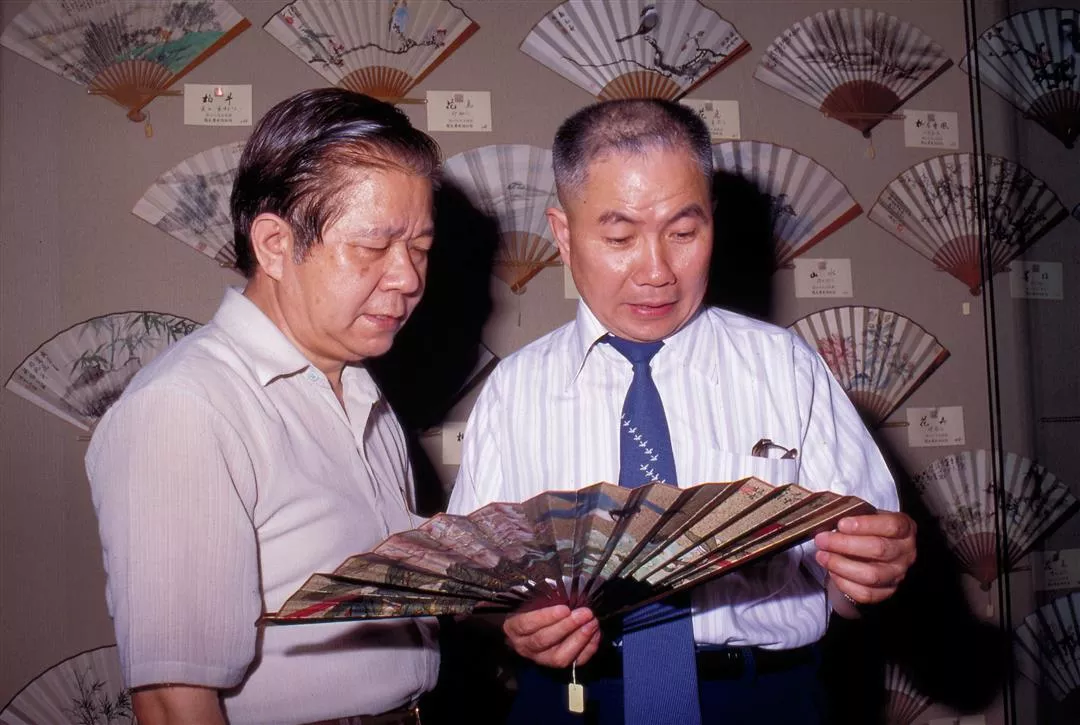
1. Fan collector Huang T'ien-ts'ai (right), and fan conservator Chang Hsin-pai became friends through their common interest.
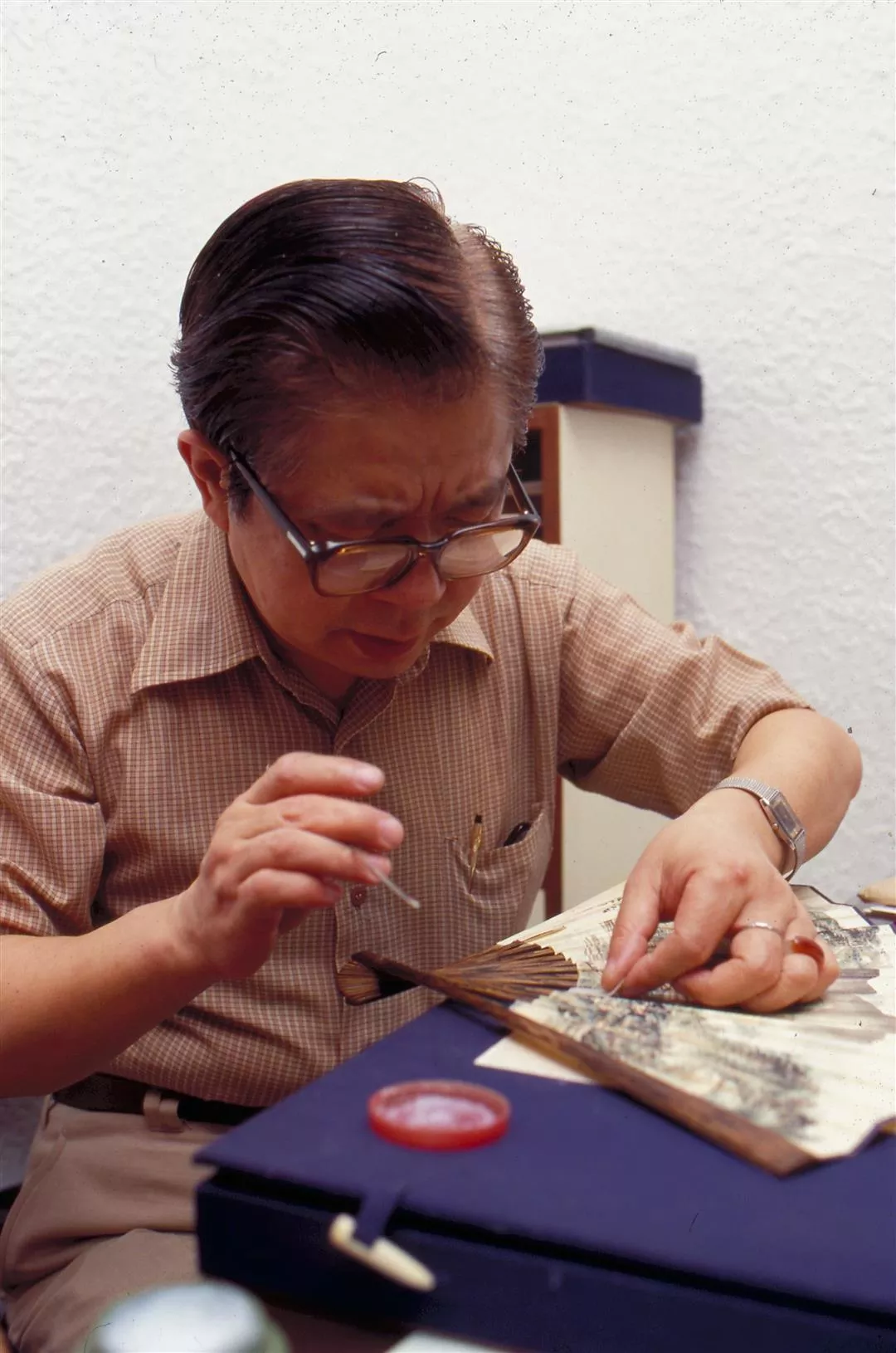
2. Chang Hsin-pai concentrates on repairing a fan.
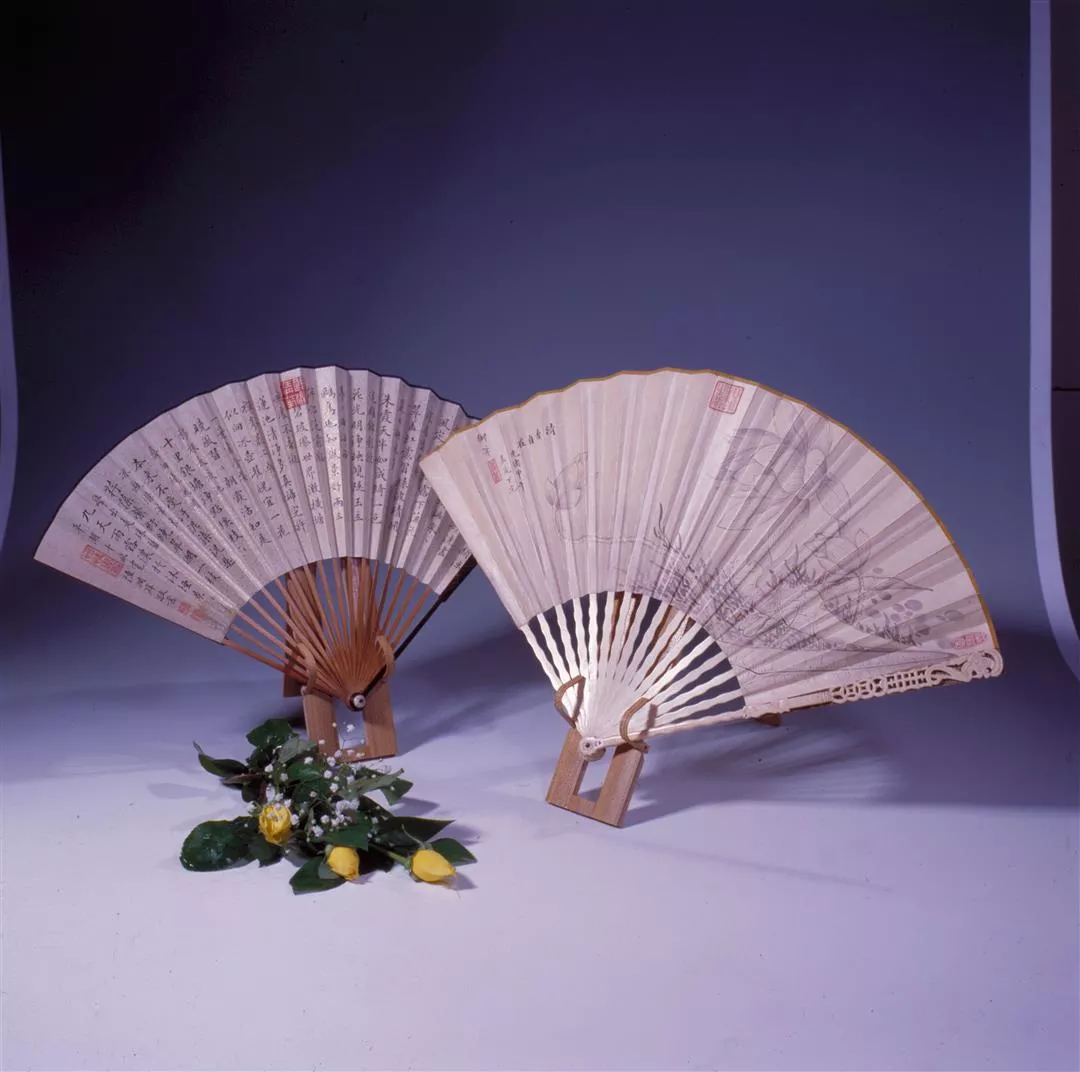
3. These two fans were painted by the Empress Dowager. On the back sides are inscriptions by the top candidates in the imperial examination.
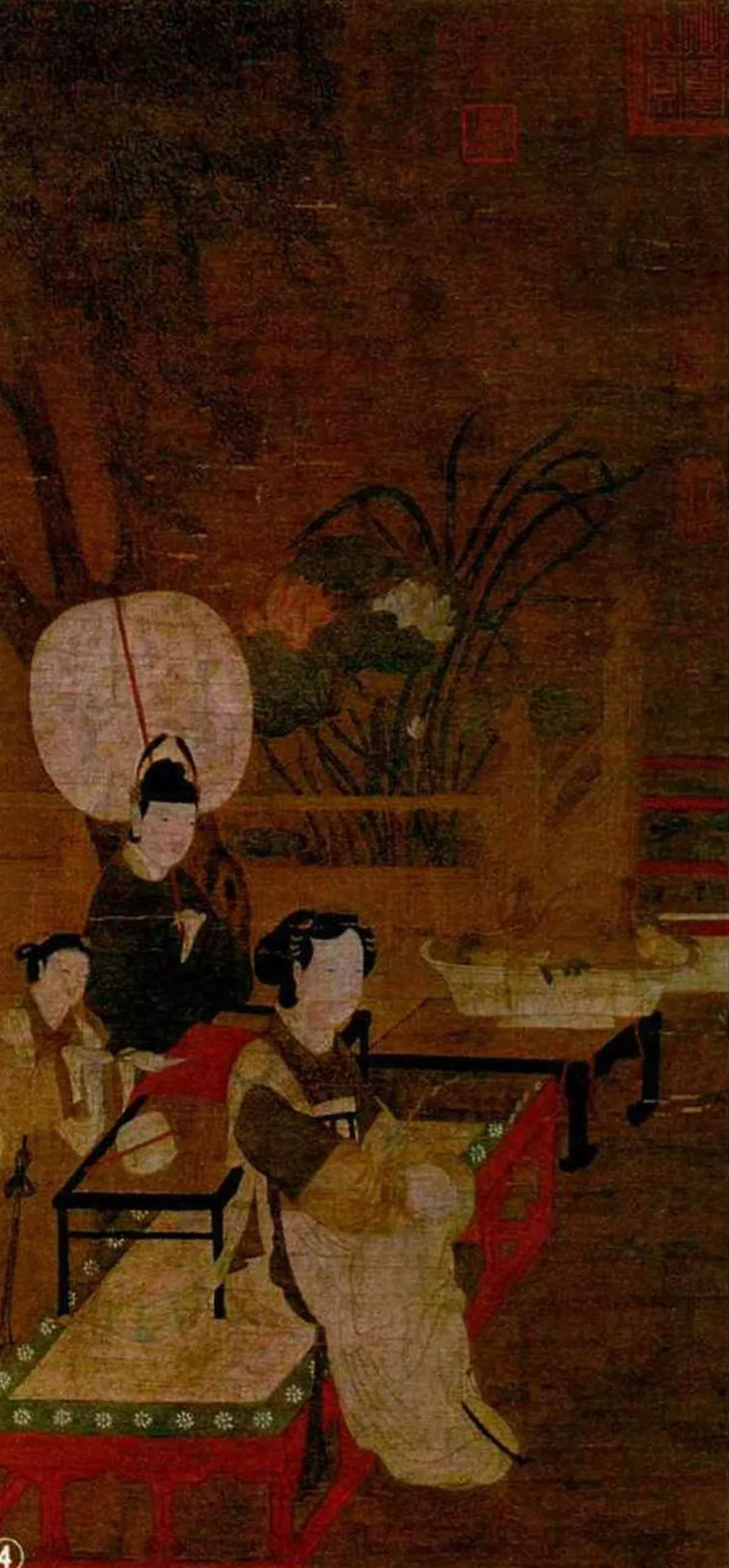
4. In this painting a servant holds a procession fan. On the table is a round fan.
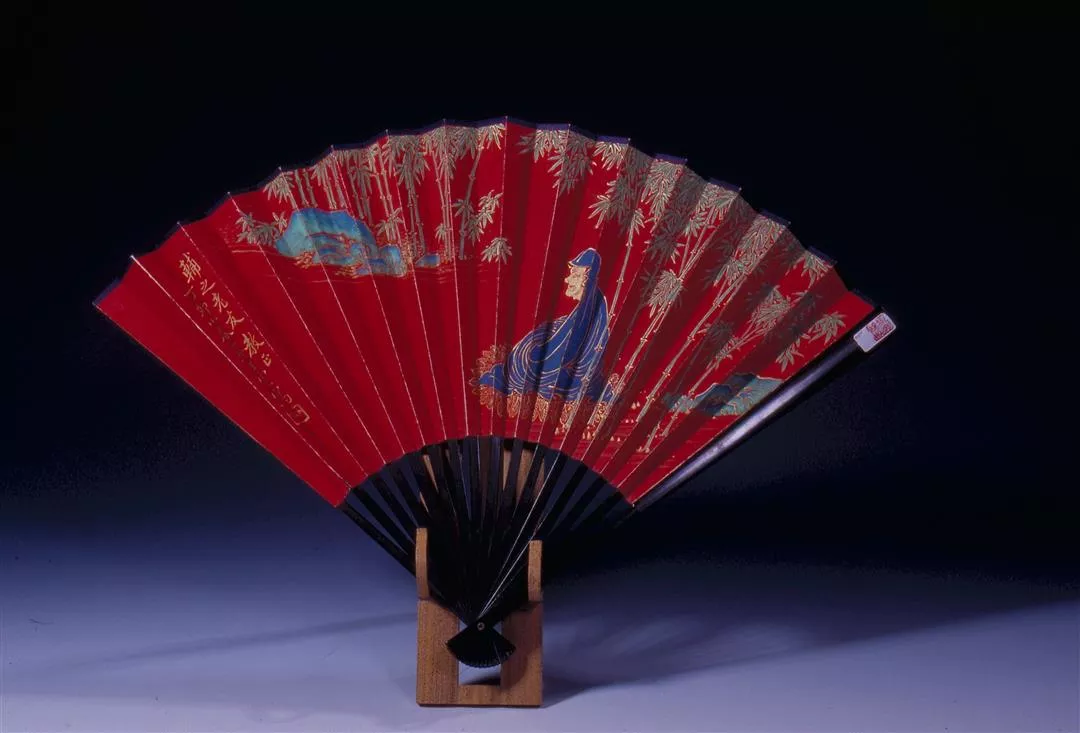
5. A Ching dynasty fan with a painting of the Buddha has maintained its vivid brilliance.
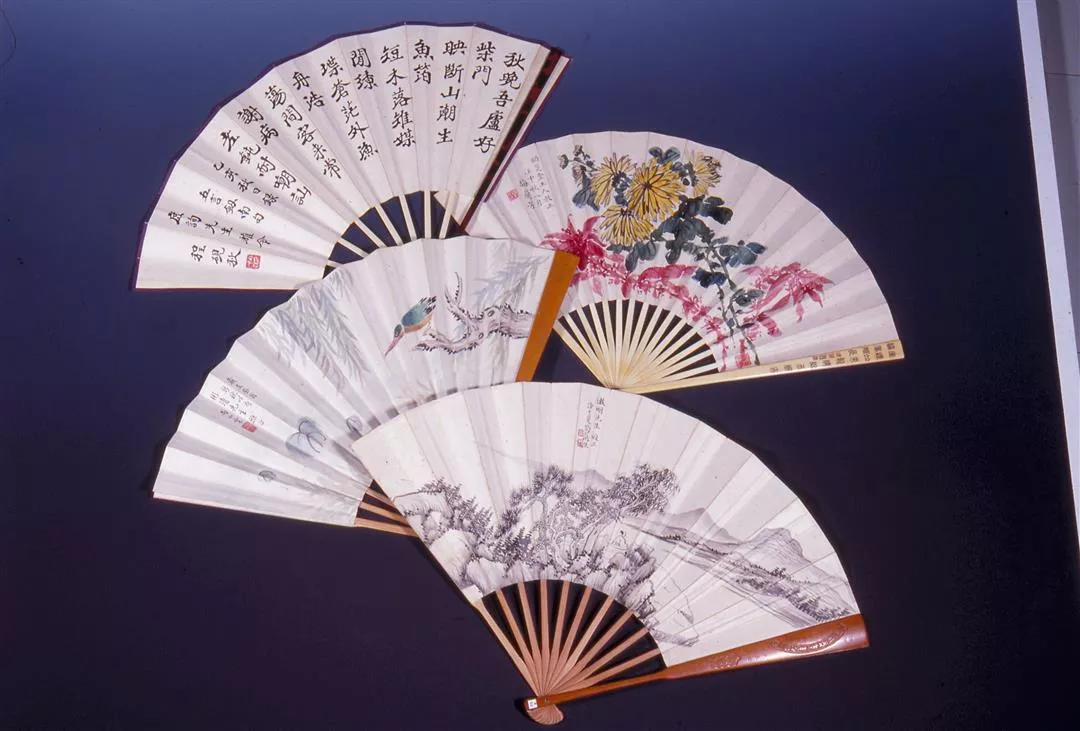
6. Fans painted by four famous Chinese Opera Stars.
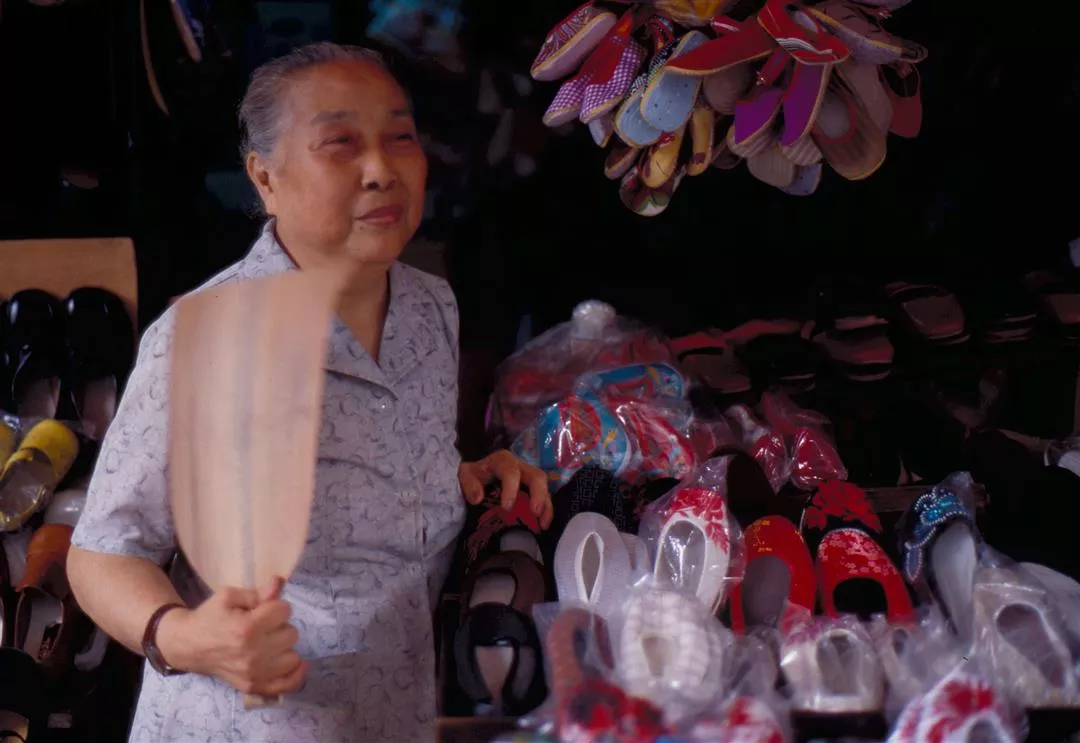
1. An elderly shoe peddler cools herself with a palm leaf fan.

2. The use of fans is still common in rural areas. Pictured is an elderly woman who holds a rush fan while chatting with her daughter-in-law.
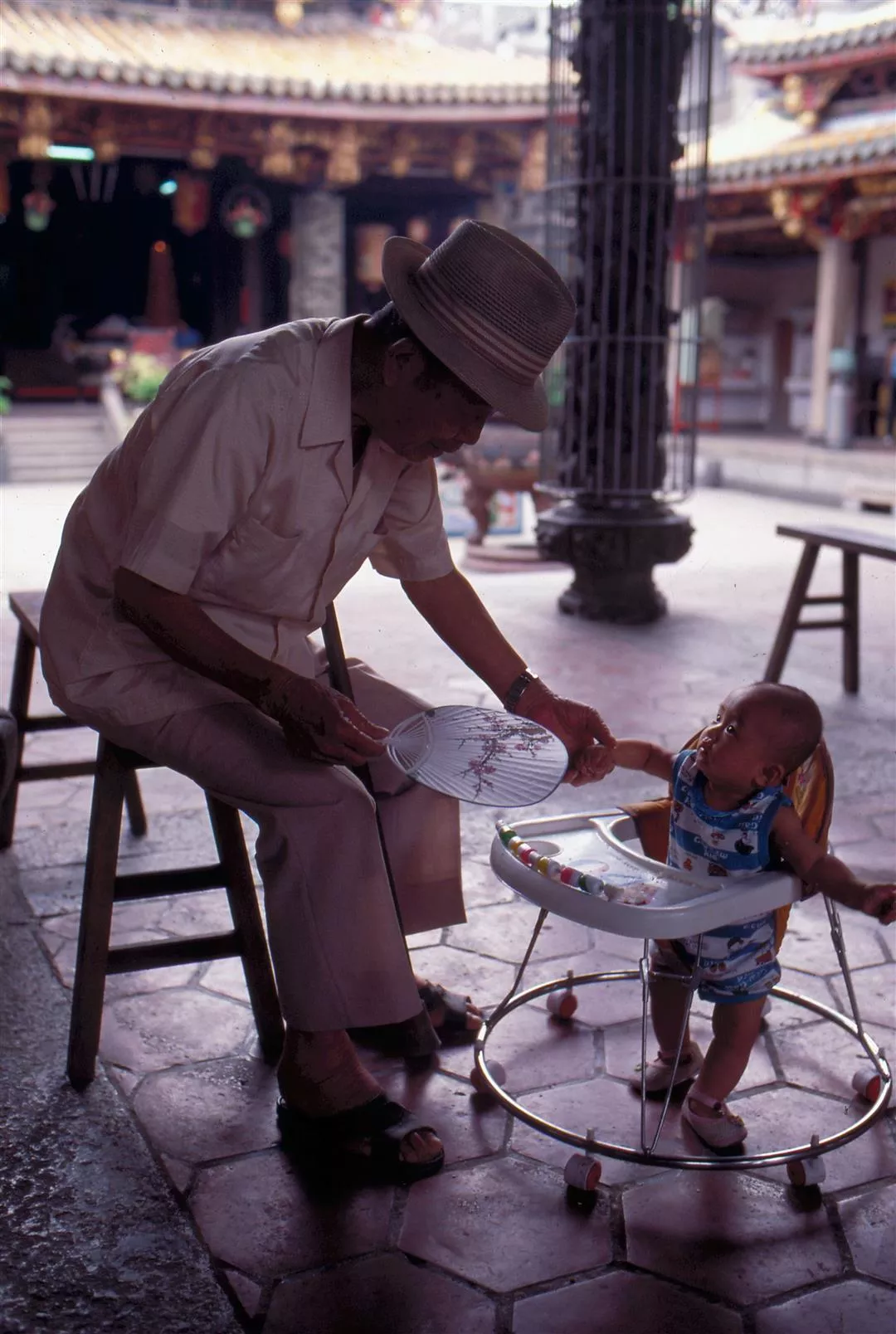
3. A grandfather entertains his grandson with a plastic and paper fan.

4. Large kungfu fans create an interlocking pattern of lights and darks under the brilliant rays of the sun.